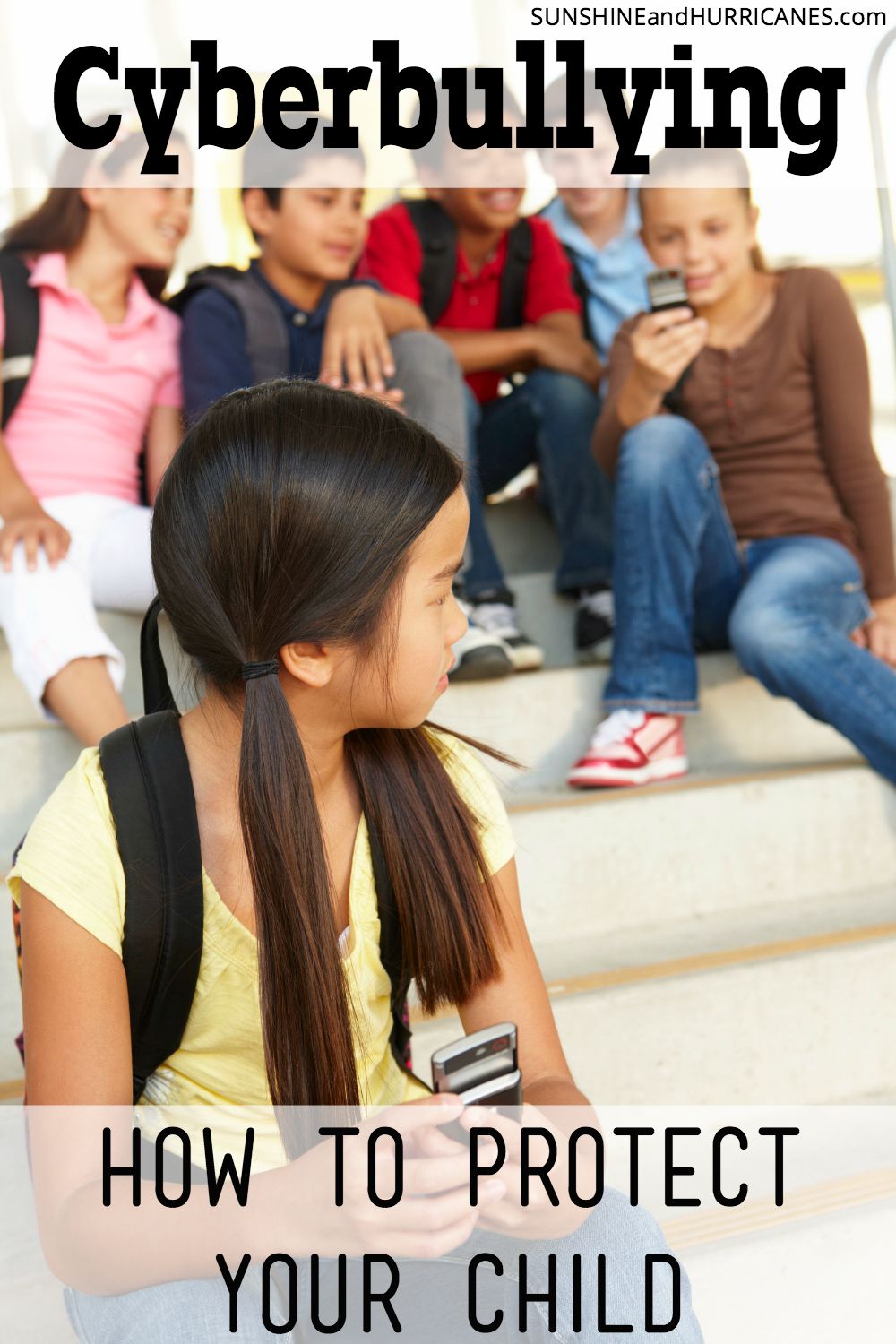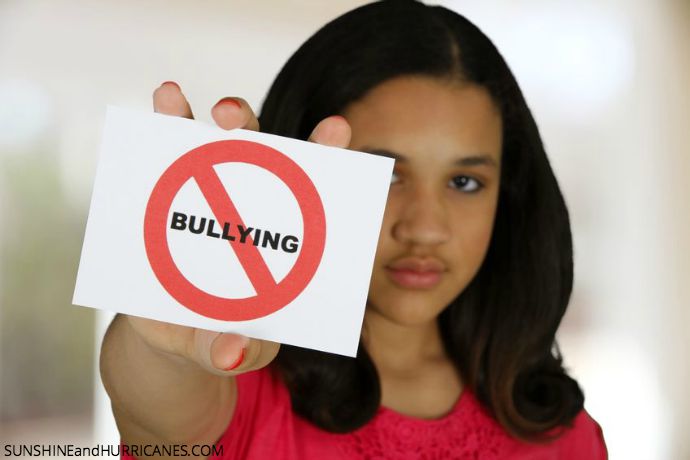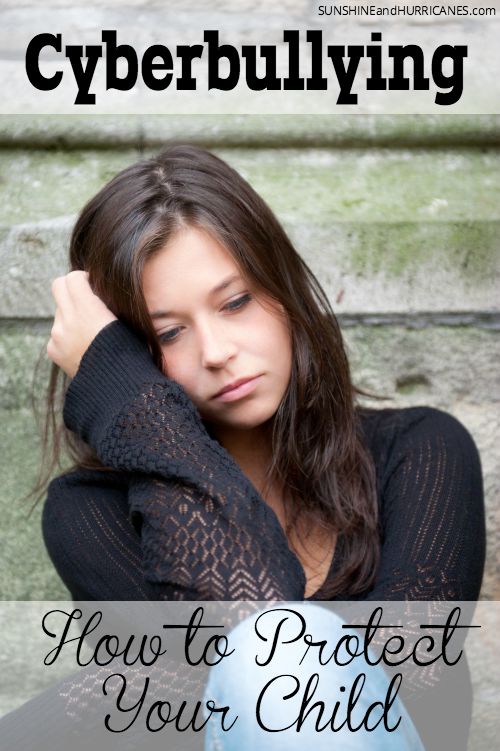Did you know that some estimates say that more than half of all children are likely to experience cyberbullying? In today’s world where technology has become an everyday part of our children’s lives, parents must realize bullying has moved beyond its traditional forms and has taken on a whole new life in the online realm.
I have a child who just started middle school. Almost ALL of his classmate have phones and many have been given access to social media despite the fact that the earliest recommended age is 13. Parents have already shared stories with me of situations where their children have been harassed via text by young people they thought were their friends. Plus, I’m sure as parents, we’re all familiar with the tragic incidents covered in the news about teenagers taking their lives after particularly vicious cyberbullying episodes. It breaks my heart!
While we often worry about our kids being the victims of cyberbullying, it’s also important to note that the facts show our children may be just as likely to be the one doing the bullying. In either case, I know that we all want to do whatever we can to keep children safe and to minimize the impact of this damaging trend on today’s young people.
What is cyberbullying exactly?
It comes in many varieties, but includes all of the following:
- Sending hurtful messages or threats via email or text or posting them to social media networks
- Sending or posting inappropriate pictures of another person via text, social networks or email
- Spreading rumors online or through texts
- Breaking into another person’s email or social media accounts to send false messages
Why does bullying occur?
Although commonly associated with poor self-esteem, children with high self-esteem who think they are superior and are entitled to treat others poorly can just as often perpetrate bullying. Bullying is about control and there is no one profile that fits bullies, they come in all shapes and sizes and can be found across all age groups. Bullying can also result from being bullied or even abused in the home environment.
What can parents do?
Parents who are often very hands on in every other area of their child’s lives, may not have the same involvement when it comes to their children’s online activities. Many parents do not install any kind of parental controls on their children’s devices, they are unaware of the suggested age requirements for children to participate in social networks (13 is generally the youngest age recommended), and they hesitate to monitor their children’s online activity because they think of it as spying.
Unfortunately, this lack of supervision is part of what is fueling the increase in cyberbullying. Kids feel they have more freedom and anonymity in the online space and therefore are emboldened to say and do things they might not in more open environments. Also, because parents aren’t asking more questions and talking with their kids about technology, children are less likely to tell their parents what is going on and seek help if they are experiencing cyberbullying.
As a parent, it may be difficult to know how you can help your child to avoid being bullied, especially if you are unfamiliar and uncomfortable with today’s technologies and social networks. However, you don’t need to be a “techie” to be an informed and responsible parent in this area.
When it comes to bullying, parents have an extremely powerful weapon at their disposal; it’s called a conversation.
The simple act of talking with children regularly and being involved in their lives (sometimes whether they want us to be or not) can be the key to keeping them safe.
Maintain an ongoing dialogue with them about privacy, online etiquette and what is or isn’t appropriate to share or say online. Also, make sure they understand that once they post something online they can’t take it back.
What Tools are Available to Parents?
Since talking with kids has been identified as the number one way to prevent cyberbullying, SAMHSA (Substance Abuse and Mental Health Service Administration) has recently released the “Know Bullying” app as a resource for parents. The app has conversation starters that parents can use to open up everyday dialogue with their children. There are also tips to prevent bullying by different age groups, warning signs, reminders and social media strategies. There is even an educator’s section with ideas to prevent bullying in the classroom.
There are also numerous easy to use privacy settings on computers, web browsers and cell phones to help protect children. Parents can find step-by-step instructions on how to use these tools with a simple Google search. It’s also wise to take it another step further and consider installing parental controls software for younger children on any technology they may be using as well as monitoring apps on your children’s phones. Simply search online using the term “parental controls. This isn’t spying if you are open and honest with your children. Let them know that the online world is tricky and that you will be keeping an eye on them out of love and concern for their safety.
Want to know more about raising kids with today’s technology challenges?
What Parents Need to Know About Social Media
How to Have the Tech Talk with Younger Kids
How to Have the Tech Talk with Tweens and Teens
You’ll also find other great information on our Pinterest Board:
Follow Sunshine and Hurricanes ‘s board Technology for Kids on Pinterest.
Have Your Kids Experienced Cyberbullying?












[…] may be worse when your son or daughter is the bully and picks on other kids, but when we teach our children they can walk through life without noticing […]